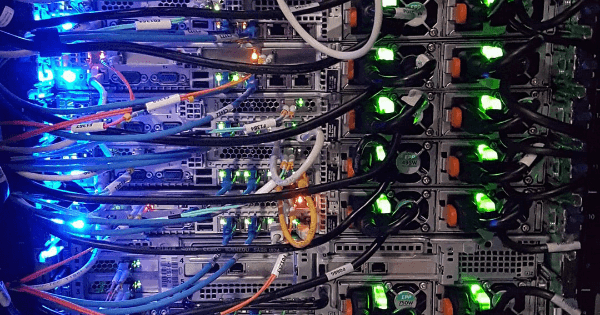En 2020, muchos de nosotros utilizamos Internet de manera constante. Pero eso no significa que todos puedan tener acceso a este lujo, ni que todos puedan beneficiarse de tener el mismo nivel de conectividad de capacidad segura. Se discute mucho sobre si el Internet inalámbrico 5G podría llegar a reemplazar las redes de fibra óptica como la banda ancha. ¿Pero, será ese un objetivo realista? ¿Qué tipo de inconvenientes potenciales existen para llegar a esto? En el artículo de hoy, explicaremos algunas de las principales diferencias entre Internet de banda ancha a través de fibra óptica y las conexiones inalámbricas 5G, y hablaremos sobre si 5G pudiera llegar a reemplazar el uso de banda ancha por completo.
Internet de banda ancha
Primero, analicemos uno de los métodos más familiares para acceder a Internet: la banda ancha. Con una conexión de banda ancha, siempre se puede estar en línea (en contraste con las conexiones de acceso telefónico más antiguas). Si bien puede utilizar algunos métodos diferentes para acceder a Internet de banda ancha, Internet a través de fibra óptica se ha convertido en el líder. En los últimos cinco años, la capacidad de fibra ha aumentado; de hecho, la industria de fabricación de cables de fibra óptica ha crecido un 11,8%. Esto se debe en gran parte a que Internet de banda ancha es rápido y bastante accesible. Las conexiones de banda ancha de fibra óptica se encuentran entre las opciones más rápidas disponibles y proporcionan la conectividad de capacidad segura que los clientes esperan.
Sin embargo, la banda ancha no es perfecta. Aunque ofrece velocidades impresionantes y el tipo de conectividad de capacidad segura que buscan muchos clientes, no siempre está disponible en todas las áreas, especialmente en lugares rurales o zonas remotas. Además, las conexiones de banda ancha por fibra óptica siempre seguirán requiriendo del uso de cables. Para algunos, eso puede dificultar su uso de Internet al tener que estar conectado, o puede que no se adapte por completo a su estilo de vida. Como resultado, los clientes pueden buscar alternativas que no los atan o pongan límites a su capacidad de acceder a Internet.
Internet 5G
Internet inalámbrico es una opción cada vez más popular para la conectividad segura, pero a menudo requiere el uso de un enrutador. Sin embargo, ahora hay opciones de internet inalámbrico que se pueden usar a través de dispositivos móviles, lo que elimina la necesidad de una configuración de internet inalámbrica tradicional. Una de esas opciones es Internet 5G (o celular inalámbrico de quinta generación). Todos los operadores de telefonía móvil de EE. UU. han lanzado ya algún tipo de red celular 5G, lo que hace posible que alguien que solo tiene un teléfono celular o dispositivo inteligente obtenga acceso a Internet de una forma rápida.
Algunos de los beneficios de 5G incluyen gran velocidad, capacidad de respuesta e incluso la posibilidad de conectar a más de un dispositivo a la red. Y debido a que las opciones de Internet 5G pueden proporcionar una mayor conectividad en áreas que de otro modo podrían limitar el acceso o la confiabilidad, el uso de este tipo de conexión es atractivo para muchos consumidores. Además, algunos proveedores ya han lanzado opciones de Internet 5G específicamente para uso residencial, lo que permite a los clientes replicar la conexión de alta calidad en sus teléfonos para uso doméstico.
Dicho esto, aún necesitará usar un receptor para este tipo de servicio, lo que implica un aumento en el uso de electricidad dentro de su hogar. Además, la velocidad de 5G no siempre es lo que parece ser. Y dado que las señales 5G también pueden interrumpirse debido a factores externos, esta podría no ser una opción completamente confiable hasta el momento.
¿Podría 5G reemplazar la conectividad de banda ancha?
Si bien es cierto que el uso generalizado de 5G podría abordar algunas de las deficiencias experimentadas con otros tipos de conexiones a Internet, la realidad es que 5G es todavía relativamente nuevo en nuestra realidad y debe mejorarse mucho más antes de que realmente pueda reemplazar cualquier tipo de conexión de banda ancha a través de fibra óptica. También vale la pena señalar que algunos grupos pueden oponerse a una red 5G a nivel nacional debido a problemas de salud; aunque no hay pruebas de que 5G use ningún efecto negativo en la salud, puede ser una batalla cuesta arriba convencer a algunos de que estas redes no representan ningún daño para el público.
En otras palabras, hay ciertas barreras importantes que se interponen en el camino de la implementación generalizada de las redes 5G. Y aunque 5G podría resolver ciertos problemas, la realidad es que quienes dependen del uso intensivo de Internet pueden preferir la conectividad segura que proporcionan las conexiones de banda ancha por fibra óptica. En esencia, estos dos tipos de redes probablemente necesitarán trabajar juntos, en lugar de oponerse, para garantizar que todos puedan acceder a Internet lo que necesitan.
Conozca más sobre los servicios de towering de UFINET.
Fuentes:
https://linkrel.net/r/?D27DBB
https://linkrel.net/r/?B5CAF0
https://linkrel.net/r/?D5C58E
https://linkrel.net/r/?951512
https://linkrel.net/r/?B1443C
https://linkrel.net/r/?20F773




